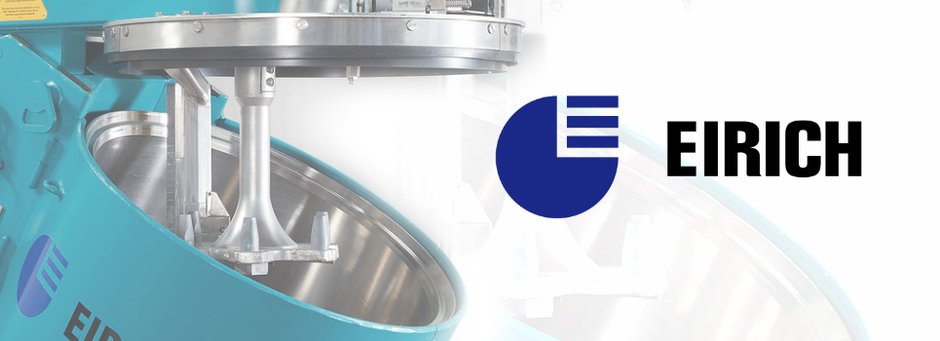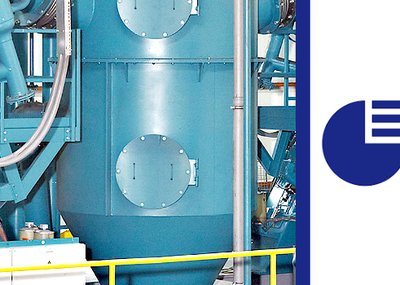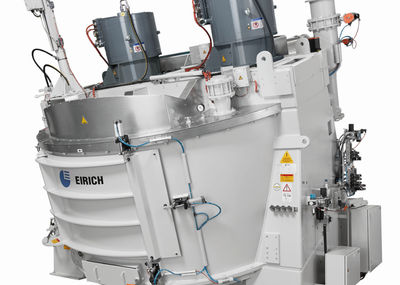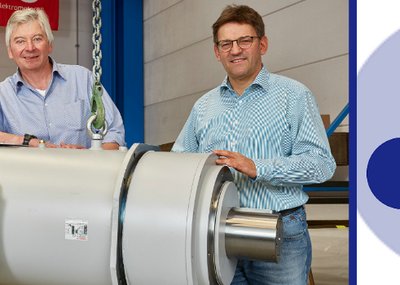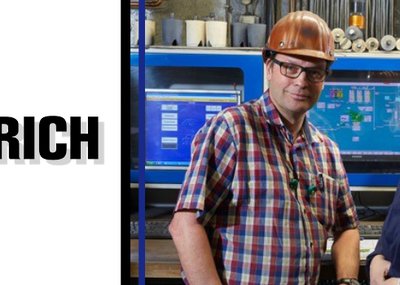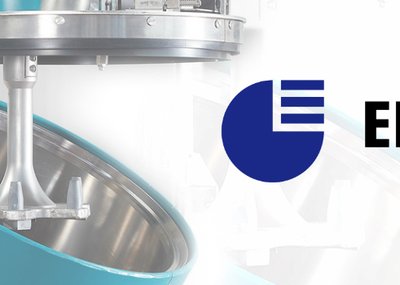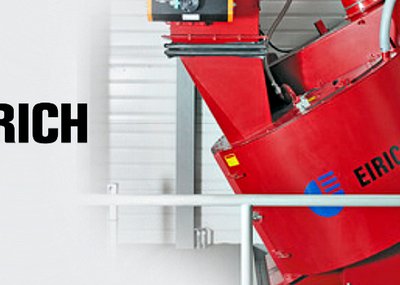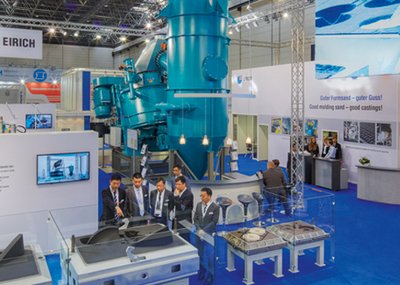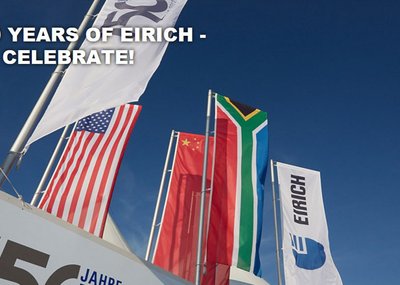Mixing drives with asynchronous motors, which have been commonly used for many years, come with restrictions. Usually, the rotational speed of the motor is not the same as that of the mixing tool. In order to obtain the most suitable mixing speed for the mixing task, gearing ratios are normally realized with the aid of V-belt drives, or gearboxes are used for applications with a high torque demand to translate high motor speeds into low tool speeds.
Mechanical transmission elements such as V-belts and gearboxes are subject to wear, so regular inspections and maintenance are essential. When torque motors are used, these transmission elements are no longer required. The mixing tool is then connected directly via a flange to the motor shaft of the torque motor, and the power transmission is direct and loss-free.
Rotor design is key
In terms of its basic layout, a torque motor is the same as a conventional asynchronous motor. The key difference is in the design of the rotor. Instead of the armature found in an asynchronous motor, which is subject to slip, rotors loaded with permanent magnets are used in torque motors. This technology enables an increase in the size of the magnetic field by around 20%. The design of the rotor with permanent magnets and the resulting geometry that this enables lead to an increase in drive torque, which in turn allows the motor to be used as a direct drive.
The use of torque motors offers many advantages: less weight, more power and minimized losses improve efficiency and dynamic performance. Thanks to the omission of a number of mechanical elements, torque motors are low-noise and low-maintenance. Due to the increased stiffness of the drive train, e.g. in comparison to V-belt drives, vibrations are reduced and the motor runs more smoothly. There is virtually no wear at all in the motor, partly also because there are no radial belt forces.
Further advantages of the torque drive result from the way in which the torque motor works and from the fact that it is operated with a frequency inverter as standard. Thanks to the high torque, which remains constant throughout the entire operating range of the motor, the torque drive with frequency inverter makes it possible to optimally adjust the rotating speed of the mixing tool to the requirements within a mixing process. Together with a high overload torque, the torque drive also enables the tool to start up under high loads. This makes the drive absolutely predestined for challenging mixing tasks where high levels of torque are required. For this type of application, asynchronous motors often need to be designed with a rated power output that is not called upon during the bulk of the processing time, but instead is just needed occasionally to cope with peak loads and during start-up.
Cost comparison between torque and asynchronous motors
If you compare just the cost of the torque motors and asynchronous motors, torque drives can initially appear more expensive due to the higher purchase cost of the motor including the frequency inverter. However, if the costs of the components for the belt drive and the gearbox that are required for drives with asynchronous motors are included in the cost assessment, the additional costs are relativized. Depending on the particular application, a torque drive can be fitted to a new machine with almost no additional cost in comparison to conventional drive systems.
Since there are no friction losses due to mechanical components like belt drives, gear drives or transmission elements, the efficiency of the drivetrain is higher than that of conventional drive systems. As a result, the power requirements are lower, and this means that it is often possible to use drives with a lower power output. With a torque drive there is also no need for maintenance of belt drives and gearboxes, which are both subject to wear, or for ongoing checks of belt tension and/or oil fill levels.
Today, EIRICH already uses torque motors as standard on mixers for the preparation of lead paste mixes, which are used to manufacture rechargeable lead batteries. EIRICH conducted a comparative study at a customer that looked at a mixer with an asynchronous motor and a V-belt drive and a mixer with a torque drive; energy savings of up to 25% were achieved during the preparation of identical formulas.
For over ten years now, torque motors have also been the standard technology for large-scale mixers, which are used for the processing of ores and in sinter plants. The excellent energy efficiency, low maintenance requirements and long service life of the mixing tool drives have already inspired customers to convert older mixers to the new drive system.
By equipping new machines with this drive technology, EIRICH offers its customers the opportunity to significantly reduce the operating costs of a mixer. Costed over the entire lifecycle, which is often several decades, the investment in state-of-the-art drive technology will always pay for itself.
EIRICH will also be happy to examine the conversion of older machines that are already part of the existing inventory. Customers will then know the time frame within which an investment in torque technology will be viable. The aim is to enable operators to run their systems with high economic efficiency, productivity and production reliability.

